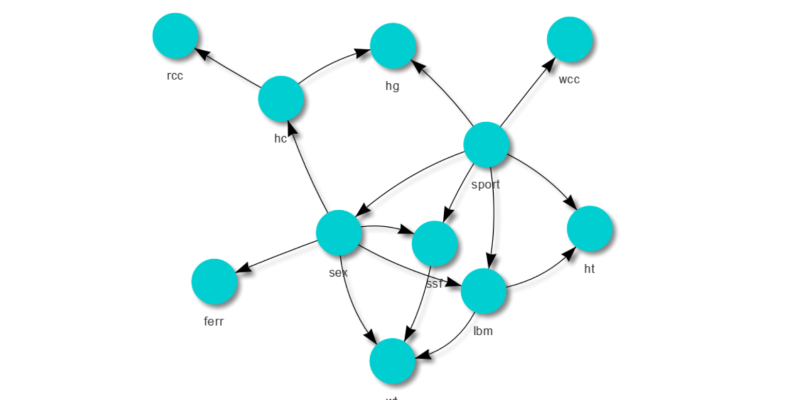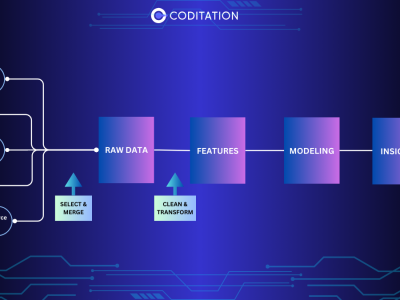Imagine standing before a giant spider’s web, each strand trembling slightly with the slightest movement. One touch in the corner sends a ripple across the entire structure. Bayesian Networks work in much the same way a delicate web of probabilities where each node, each connection, tells a story about how one event influences another. These models don’t see the world in black and white; they live in the gradients of uncertainty, where every cause has a consequence and every piece of information shapes belief.
They’ve become an invisible engine behind many modern marvels from predicting medical diagnoses to driving autonomous vehicles the true art of teaching machines to reason under uncertainty. It’s no wonder students enrolling in an Artificial Intelligence course in Delhi find Bayesian Networks both a revelation and a challenge: they reveal how machines can mimic our own intuitive sense of cause and effect.
The Architecture of Understanding: A Directed Web of Belief
A Bayesian Network is more than just a mathematical framework; it’s an elegant architecture of understanding. Think of each node as a random variable perhaps the weather, the outcome of a medical test, or a stock price while the directed arrows represent dependencies, much like how a change in one decision can shift the entire course of a narrative.
Unlike chaotic systems, this network is acyclic, meaning it doesn’t loop endlessly but flows in one direction, from cause to effect. This structure allows for a clear propagation of information: when new data arrives, the network adjusts its beliefs, much like how humans revise opinions when presented with evidence. Bayesian inference the beating heart of the network enables this graceful recalibration of probabilities.
Learning from Evidence: When Data Meets Belief
At its core, a Bayesian Network learns by balancing two forces: prior knowledge and observed evidence. Picture a seasoned detective working a case. The detective begins with hypotheses priors based on experience. As clues emerge, the detective adjusts those beliefs until a coherent story emerges. That’s Bayesian reasoning in essence.
When used in computational systems, this reasoning enables models to make intelligent guesses in the face of uncertainty. A machine learning algorithm might not “know” for sure if a patient has a disease, but it can estimate probabilities based on symptoms, test results, and patient history. By doing so, it mirrors the subtle decision-making of human experts. It’s this interpretive depth that attracts learners of an Artificial Intelligence course in Delhi, where probability becomes a language for reasoning.
Applications That Think Beyond Certainty
Bayesian Networks shine in environments where information is incomplete or noisy conditions that mirror real life. In healthcare, they diagnose diseases from incomplete data. In cybersecurity, they detect anomalies before breaches occur. In finance, they forecast market shifts by weaving interdependencies among economic indicators.
Their brilliance lies in flexibility: they can integrate new information seamlessly without discarding prior understanding. A doctor using a medical Bayesian system doesn’t need to reprogram the entire model when a new symptom arises; the network updates beliefs automatically, refining its predictions. This fluid adaptability is why Bayesian approaches have become the backbone of intelligent decision-support systems.
Behind the Curtain: Algorithms That Weave Probabilities
The machinery beneath a Bayesian Network operates like a group of messengers carrying probabilities across the network’s paths. Techniques like belief propagation and variable elimination determine how information flows. When new data enters say, a patient’s test result or a sensor reading the model updates related probabilities throughout the network, ensuring consistency.
This dynamic nature transforms Bayesian Networks into powerful predictive tools. They don’t just describe static relationships; they reason understanding how one piece of knowledge reshapes another. It’s a subtle yet profound shift from deterministic computing toward probabilistic reasoning, where uncertainty isn’t a flaw but a feature.
Human-Like Reasoning: Where Machines Mirror Intuition
What makes Bayesian Networks fascinating is their uncanny resemblance to human thought. Our brains rarely make binary decisions. Instead, they juggle likelihoods weighing chances, revising assumptions, drawing on experience. When you decide whether to carry an umbrella, you unconsciously perform Bayesian inference: assessing cloudy skies, yesterday’s forecast, and that faint scent of rain in the air.
These models bring that intuition to computation. They allow systems to say, “Given what I know, this is most likely true,” rather than, “This must be true.” This probabilistic humility is what makes them powerful in a world overflowing with ambiguity.
Conclusion: The Quiet Revolution in Intelligent Systems
Bayesian Networks don’t shout their presence like flashy neural networks or massive data models. They work quietly behind the scenes, translating uncertainty into informed action. They embody the essence of intelligent reasoning learning, adapting, and refining beliefs as evidence unfolds.
For those venturing into the world of AI, mastering Bayesian Networks is like learning to see the world through the lens of probability where cause and effect are intertwined, and every decision is a dialogue between belief and evidence. It’s no surprise that an Artificial Intelligence course in Delhi often treats this topic as a cornerstone, because here lies the secret of teaching machines to think not just logically, but wisely.
In the vast symphony of Artificial Intelligence, Bayesian Networks are the subtle yet essential harmonies the ones that make reasoning sound human.








Comments